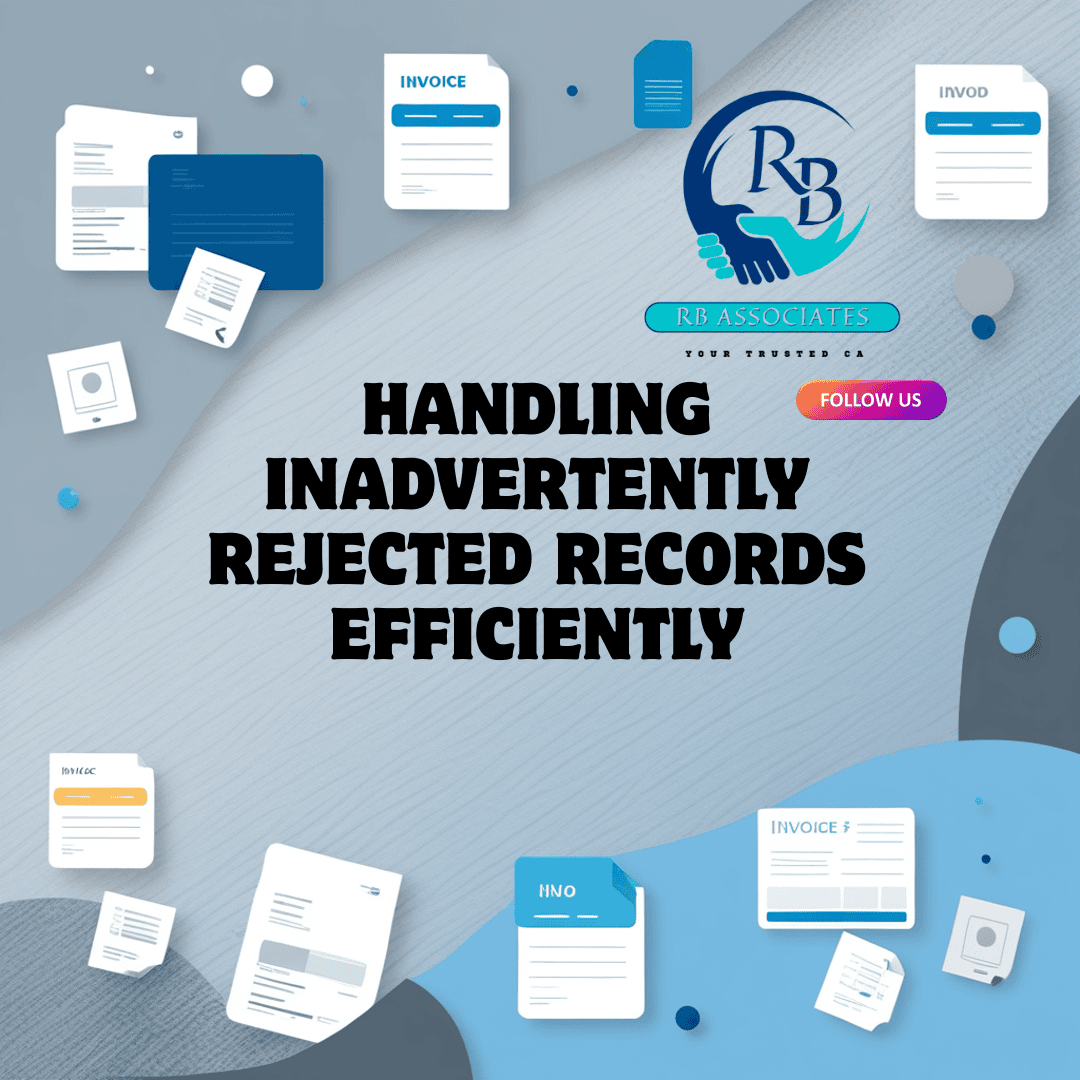The rollout of the Invoice Matching System (IMS) has brought increased transparency and accountability to India’s GST framework. However, users sometimes inadvertently reject genuine records—such as invoices, debit notes, or credit notes—leading to compliance and reconciliation challenges. This blog walks you through how to handle such scenarios and ensure you don’t miss out on Input Tax Credit (ITC) or overstate liabilities.

🧾 1. Availing ITC on Wrongly Rejected Documents
If a recipient mistakenly rejects a valid invoice, debit note, or e-commerce operator document and has already filed GSTR-3B for the same period, there’s still a remedy.
✅Solution: Request the supplier to re-furnish the same record (unchanged) in GSTR-1A for the original return period or the amendment table of a subsequent GSTR-1/IFF.
🧮 Once the recipient accepts this record on IMS and recomputes GSTR-2B, the full ITC can be availed as the original entry was not accepted.
⏳Important Note: ITC can be claimed only in the GSTR-2B of the corresponding tax period where the amended record is reflected.
🔁 2. Supplier Liability When Re-Furnishing a Rejected Record
Sometimes, suppliers face confusion about whether refurnishing a previously rejected record impacts their GST liability.
🧾Clarification: If the supplier re-uploads the same document (without any change) within the permissible time frame in GSTR-1A or the amendment table of a future GSTR-1/IFF, no additional liability arises.
📉 The reason? The amendment table accounts only for the delta value, and in this case, the values remain unchanged—so the differential liability is zero.
🔄 3. Reversing ITC on a Rejected Credit Note
If a recipient wrongly rejects a Credit Note (CN) after filing GSTR-3B, ITC reversal is necessary.
🔁Next Steps: Ask the supplier to furnish the same CN again in GSTR-1A for the original period or in the amendment table of a future period.
📊 Once the recipient accepts it and recomputes GSTR-2B, the availed ITC is reversed to match the originally rejected CN value.
💼 4. Supplier’s Liability on Re-Furnished Credit Notes
Credit notes rejected by recipients may initially increase the supplier’s liability, which is then corrected upon amendment.
🔎How it Works:
- Upon rejection, the supplier’s output liability temporarily increases in GSTR-3B.
- Once the CN is re-furnished in GSTR-1A or in a later amendment table, the supplier's liability is automatically reduced to reflect the adjusted value (which is identical to the original in this case).
🎯Result: The net liability impact is neutral.
In Conclusion:
The IMS ecosystem allows for corrective action when genuine documents are mistakenly rejected. By coordinating timely with suppliers and leveraging the amendment windows effectively, both recipients and suppliers can avoid tax mismatches and safeguard their compliance posture.

